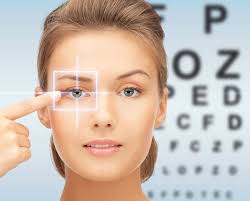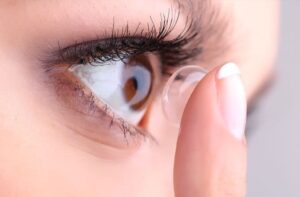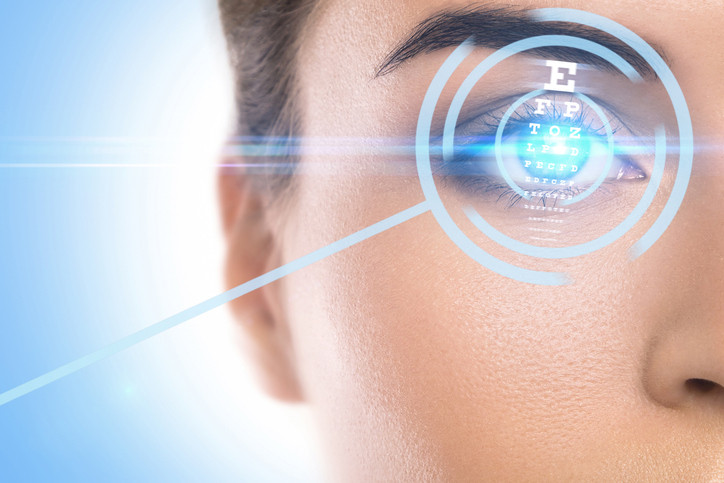If you have ever suffered from vision problems, then you know that they can be incredibly frustrating. From seeing blurred images to struggling to read text, vision problems can sideline you in your everyday life. Fortunately, there are many solutions available to help you get your vision back on track. In this post, we will explore all things vision correction and how it can help you regain your life. From glasses to surgery, read on to learn more about the options available to you.
Contents
What Is Vision Correction?

Vision correction is the process of correcting vision problems. There are many types of vision correction, including but not limited to eyeglasses, contact lenses, surgery, and laser treatment. Vision correction can be done on an individual level or a large scale by organizations like the American Academy of Ophthalmology (AAO).
Types of Vision Correction
There are many types of vision correction available to patients, depending on their needs. Each type of vision correction has its own set of benefits and drawbacks. Here are the most common types of vision correction:
Surgery

Surgery is a treatment that is used to correct a problem with the body. For eyes, surgery may be used to fix a problem with eyesight. There are many types of surgery:
LASIK
Laser-Assisted In Situ Keratomileusis is a type of eye surgery that uses a laser to remove the surface layer of your eye’s cornea. The surgery is usually done as an outpatient procedure, and patients can usually see well enough to drive and perform other normal activities within a few days after surgery. Lasik is considered one of the most effective forms of vision correction, and it has few potential side effects.
One downside to LASIK is that it may not be suitable for everyone. Patients who have high degrees of astigmatism or severe myopia (nearsightedness) may not be good candidates for Lasik because the surgery can remove too much cornea. Also, LASIK may not be an option for people with certain medical conditions, such as heart disease or diabetes mellitus.
PRK
PRK stands for photorefractive keratectomy, and this type of vision correction uses a laser to reshape the cornea without removing any surface layers. The surgery is performed as an outpatient procedure, and patients typically see well enough to drive and perform other normal activities within a few days after surgery. PRK has been considered one of the least effective forms of vision correction due to its low success rate and a high potential for eye complications.
One potential downside to PRK is that it may not be suitable for everyone. Patients who have high degrees of astigmatism or severe myopia (nearsightedness) may not be good candidates for PRK because the surgery can remove too much cornea. Also, PRK may not be an option for people with certain medical conditions, such as heart disease or diabetes mellitus.
SMILE
SMILE (Selective Mylium Injection Laser Evisceration) is a type of vision correction that uses a laser to remove the surface layer of your eye’s cornea. The surgery is usually done as an outpatient procedure, and patients typically see well enough to drive and perform other normal activities within a few days after surgery. SMILE has been considered one of the most effective forms of vision correction due to its high success rate and few potential side effects.
One potential downside to SMILE is that it may not be suitable for everyone. Patients who have high degrees of astigmatism or severe myopia (nearsightedness) may not be good candidates for SMILE because the surgery can remove too much cornea.
Contact Lenses

Contact lenses come in a variety of shapes and sizes to suit nearly any prescription. In addition, they come with a variety of features to help improve your vision.
Some contact lenses have a soft foam core that is made from natural rubber or silicone. These contact lenses are often known as “soft lenses” because they offer more comfort than rigid contact lenses.
Other contact lenses have a hard plastic or metal core that helps them stay in place during wear. These types of contact lenses are often known as “hard lenses” because they require more effort to remove compared to soft lens contact lenses.
Prescription Glasses
There are many types of prescription glasses available on the market today. Nearly every person will need a type or style of glasses that are different based on their own vision needs. The following sections will discuss some of the more popular types of prescription glasses and what they are used for.
One common type of prescription eyeglasses is called “sports glasses.” They are designed to correct nearsightedness, farsightedness, and astigmatism. Sports glasses may also be used to help with better vision in bright sunlight. People who wear sports glasses should keep in mind that they will not correct far-reaching vision problems, such as presbyopia (a problem with reading distant objects).
“Reading glasses” are usually prescribed to help people who have difficulty reading small print or objects at a distance. Reading glasses can also be helpful for people who have trouble seeing in low light or during nighttime hours.
“Laser correction lenses” are a type of prescription eyeglasses that use lasers to adjust your vision. Also, Laser correction lenses can be used to reduce the amount of myopia (nearsightedness) or hyperopia (farsightedness) in your eyes. Laser correction lenses can also be used to correct other types of refractive errors, including presbyopia and cataracts.
Is There Any Need For Vision Correction?
The need for vision correction depends on a person’s individual needs. Some people may find that they need corrective lenses to see clearly, while others may not need any vision correction at all.
The need for vision correction is an important and personal decision. If your quality of life has been diminished by uncorrected vision, then it may be time to consider corrective options. There are some reasons why vision correction may be necessary such as age-related vision changes, a genetic predisposition for eye diseases, or a need for better visual acuity.
Age-related vision changes are common and can lead to refractive errors like nearsightedness or farsightedness. If you have difficulty seeing things in the distance or up close, then corrective lenses can help reduce your symptoms and improve your overall vision. Other age-related conditions, like glaucoma, need to be monitored closely by an optometrist so that any potential damage to the eyes can be addressed promptly.
Genetic predispositions can also affect vision. Certain types of inherited eye diseases may increase the risk of developing certain types of vision problems. If your family has a history of eye issues, it may be wise to schedule regular checkups with an optometrist. Also, discuss any corrective options that may be available.
Sometimes people need vision correction even if they don’t have an age-related or genetic predisposition for eye diseases. The need for better visual acuity can arise when someone’s uncorrected vision is so poor that it affects their daily life. Examples could include difficulty driving at night, not being able to see the board in school, or needing to squint excessively when trying to view objects from a distance. In these cases, corrective measures such as glasses or contact lenses can help improve vision and make daily activities easier.
Tips To Use Ways of Vision Correction

There are many different ways to correct vision, and each method has its own set of benefits and drawbacks. Here are some tips to help you choose the best way to improve your vision.
1. Discuss your options with your doctor. Many times, doctors can recommend one or more methods of vision correction without requiring any surgery.
2. Consider your lifestyle. What activities do you enjoy? If you frequently need to read small print or work on a computer at a close distance, glasses may be the best option for you. If you spend most of your time outdoors or playing sports, contact lenses might be a better choice for you.
3. Choose the right type of eyeglasses or contact lenses. Different types of eyeglasses or contact lenses fit different faces and eyesight needs. Ask your doctor which type is best for you before making a purchase.
4. Get regular eye exams. A regular eye exam will help ensure that your eyeglasses or contact lenses are providing the best possible vision correction and that any needed changes are being made quickly enough to keep your eyes healthy and improving over time.
5. Be patient. It can take some time to get used to wearing eyeglasses or contact lenses, and you may experience some initial discomfort or eyestrain. Be patient and allow your eyes to adjust to wearing the correct vision correction device.
6. Build a strong support system. It can be helpful to have friends or family members who are willing to help you get used to wearing your new vision correction device. They can help you adjust to the new glasses or contact lenses, and they can provide moral support during difficult times.
Conclusion
When it comes to vision correction, there are a lot of different options available to you. Whether you are looking for contact lenses, glasses, or surgery, you must find the right option for your needs and lifestyle. In this article, I have outlined some of the most popular types of vision correction. I have also provided tips on how to choose the best option for you. If you have any questions about vision correction or would like more information on a specific type of vision correction, please do not hesitate to contact one of our friendly staff members at our office. Thank you for reading!
Lasik surgery is a safe 10-minute procedure to help you get rid of glasses. MantraCare offers the most advanced Lasik options. If you have any questions about Lasik surgery feel free to reach out to us at +91-9711116605.
